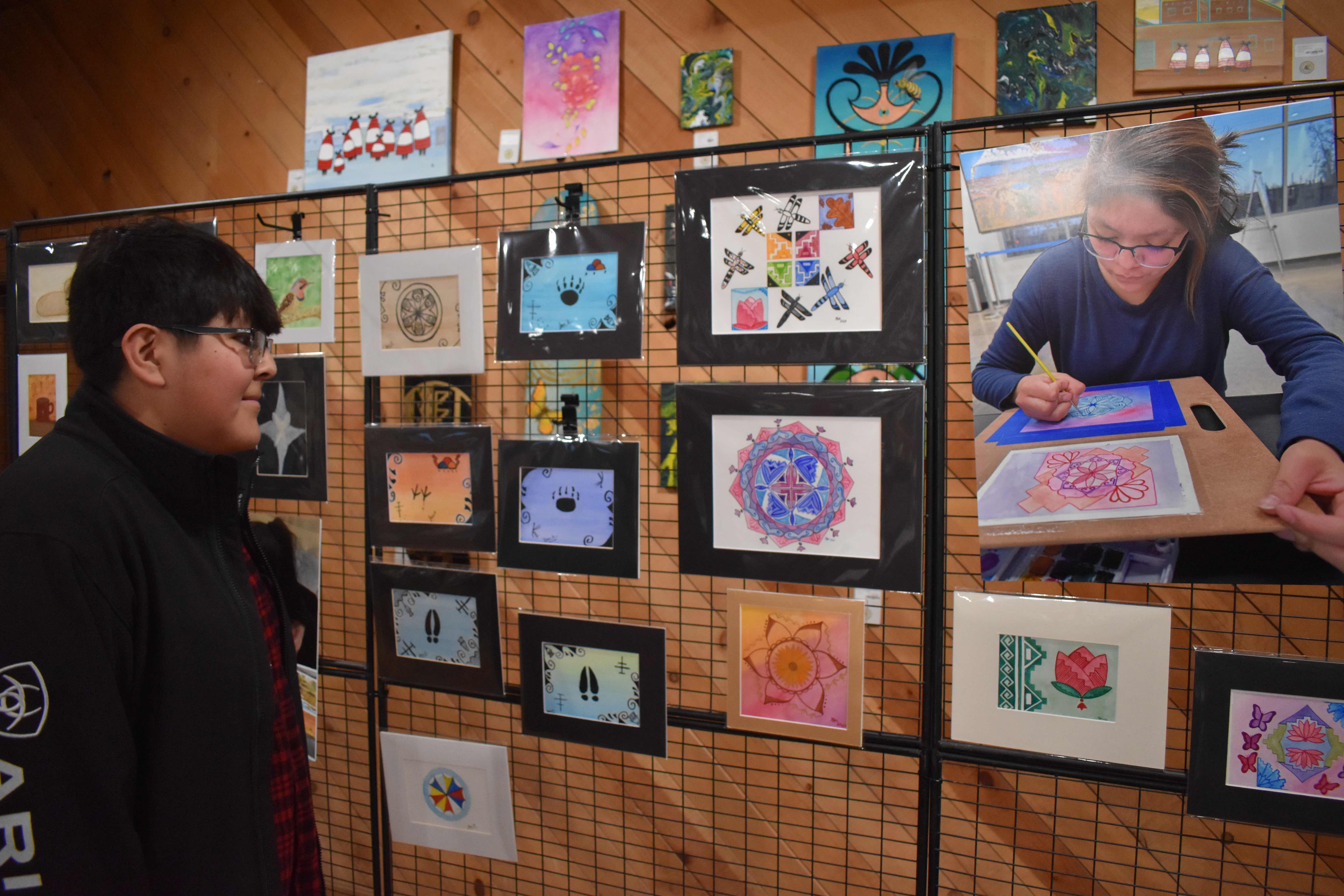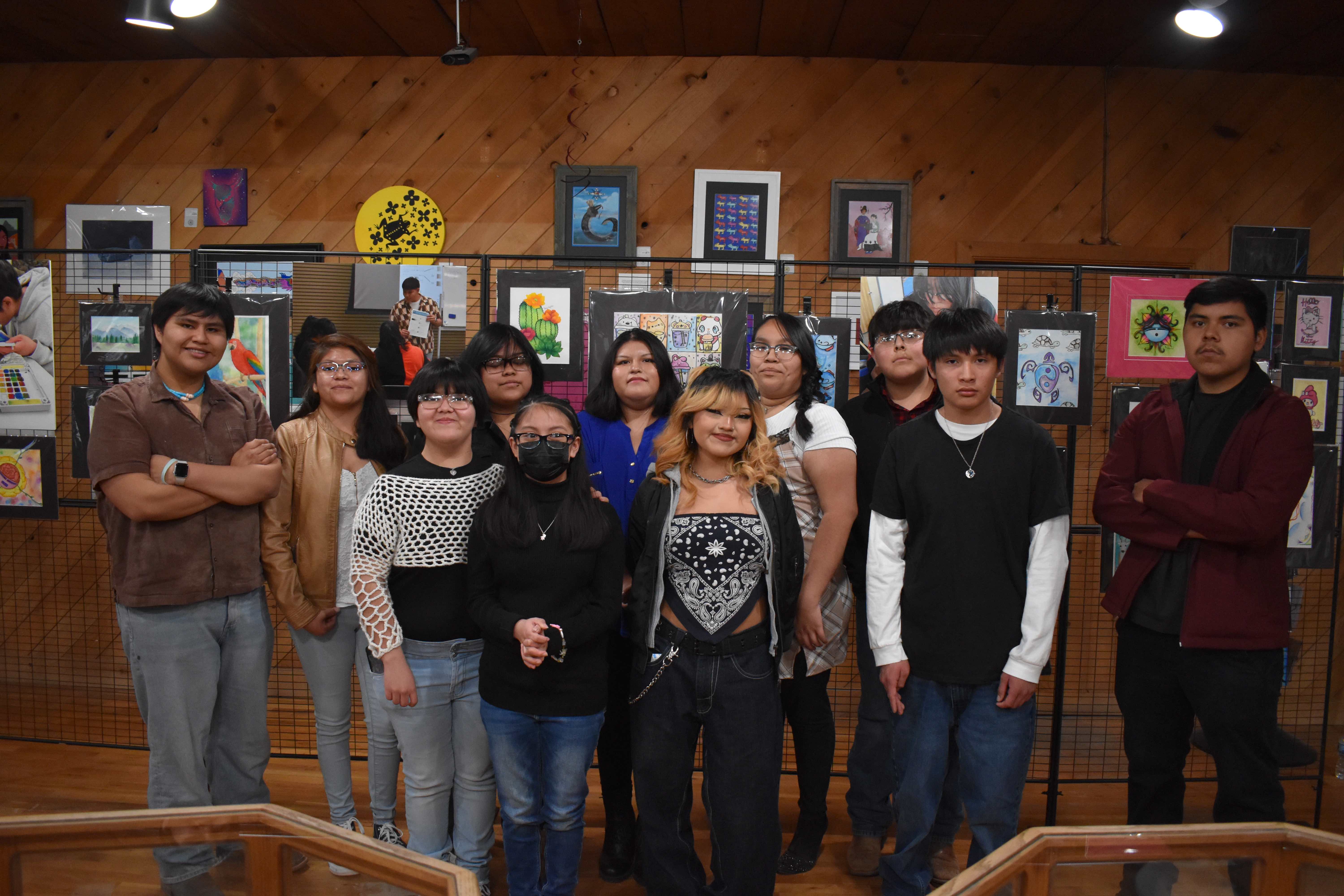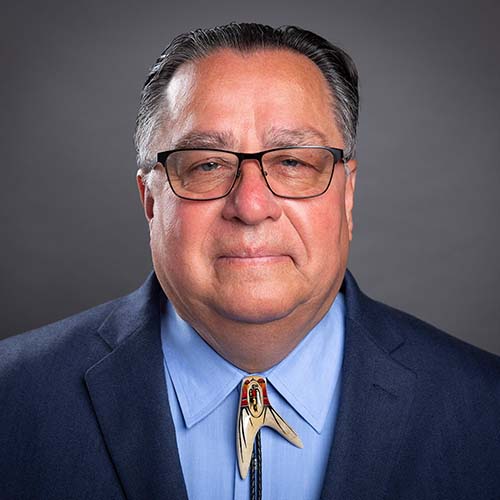
- Details
- By Native News Online Staff
With support from Ancestral Rich Treasures of Zuni (ARTZ) and Administration for Native Americans (ANA), the Zuni Youth Enrichment Project’s Emerging Artist Apprentices showcased their watercolor art at the ARTZ Cooperative Gallery on Friday, March 15.
The 10 apprentices in the watercolor cohort ranged in age from 12 to 21 and included: Tiyana Haloo, 21; Sydney Kanesta, 15; Tiayna Kanesta, 12; Nicholas Koruh-Ukestine, 18; Sewa-Ayn Laate, 18; Lacey Longhat, 17; Keidis Peynetsa, 16; Mary Peynetsa, 19; Jason Simplicio, 13; and Ryanna Waatsa-Kaskalla, 16. Together, they displayed 149 pieces of watercolor artwork.
“All pieces were on display for the public, and most were for sale,” said Elroy Natachu Jr., ZYEP’s arts coordinator. “The artists earned $680.25 in that one evening.”
The art showcase concluded ZYEP’s spring watercolor apprenticeship, which began in January with co-instructors Liam Simplicio and Laken Epaloose, the youth project’s youngest art instructors to date. Both young people participated in ZYEP programs prior to becoming leaders and mentors in the art department.
“The class was an amazing opportunity for instructors and students, creating room for growth for everyone,” Simplicio said. “As ZYEP’s youngest instructors, we had a different type of connection with youth that was very meaningful: youth leading youth.

“We strengthened our ideas and skills, and our students strengthened their techniques,” he continued. “We also saw significant growth in how students opened up to each other. This was then reflected in their artwork.”
Natachu agreed that the apprenticeship proved to be a valuable learning experience on more than one level.
“During this apprenticeship, all students were developing and expanding their artistic voices and styles,” he said. “Most were in the testing phase within their artistic journey, and they had the drive and determination to see it through to the end. They also sharpened their business skills; learning how much it costs to be an artist definitely was a surprise to most students!”
Indeed, the Emerging Artist Apprenticeship Program is about more than the art. A critical component of the program involves career readiness, with lessons that include customer service, budgeting, pricing and more.
A key partner is First Financial Credit Union, which hosts a “Spending Frenzy” event for each apprenticeship cohort. During this simulation of real-life fiscal responsibility, each student is given a fixed amount of funds and must take care of adult expenses like housing, car payments, fuel and meals.
“As show artists, they will need to buy art supplies, hotel rooms and gas to attend shows, and packaging materials for their artwork,” Natachu explained. “It doesn’t matter if they want to do this as a hobby or as a job; they need to turn a profit, and these lessons will help prepare them for the future.”
The top three students from the watercolor apprenticeship — Ryanna Waatsa-Kaskalla, Lacey Longhat and Mary Peynetsa — will attend the 2024 Bernalillo Indian Arts Festival on May 5-6. The festival takes place in Bernalillo, New Mexico, just north of Albuquerque.
“We will be taking most of the student inventory to the Bernalillo Arts Festival, along with the top three students’ new pieces,” Natachu said.
The ZYEP art team also has encouraged the students to create artwork inspired by the Missing and Murdered Indigenous Relatives movement for ZYEP’s annual MMIR event in early May.
More Stories Like This
Watermark Art Center to Host “Minwaajimowinan — Good Stories” ExhibitionMuseums Alaska Awards More Than $200,000 to 12 Cultural Organizations Statewide
Zuni Youth Enrichment Project Takes Top Emerging Artist Apprentices to Phoenix for Artistic Exploration and Cultural Immersion
From Dishwasher to Award-Winning Chef: Laguna Pueblo's Josh Aragon Serves Up Albuquerque's Best Green Chile Stew
Rob Reiner's Final Work as Producer Appears to Address MMIP Crisis
Help us defend tribal sovereignty.
At Native News Online, our mission is rooted in telling the stories that strengthen sovereignty and uplift Indigenous voices — not just at year’s end, but every single day.
Because of your generosity last year, we were able to keep our reporters on the ground in tribal communities, at national gatherings and in the halls of Congress — covering the issues that matter most to Indian Country: sovereignty, culture, education, health and economic opportunity.
That support sustained us through a tough year in 2025. Now, as we look to the year ahead, we need your help right now to ensure warrior journalism remains strong — reporting that defends tribal sovereignty, amplifies Native truth, and holds power accountable.
 The stakes couldn't be higher. Your support keeps Native voices heard, Native stories told and Native sovereignty defended.
The stakes couldn't be higher. Your support keeps Native voices heard, Native stories told and Native sovereignty defended.
Stand with Warrior Journalism today.
Levi Rickert (Potawatomi), Editor & Publisher


